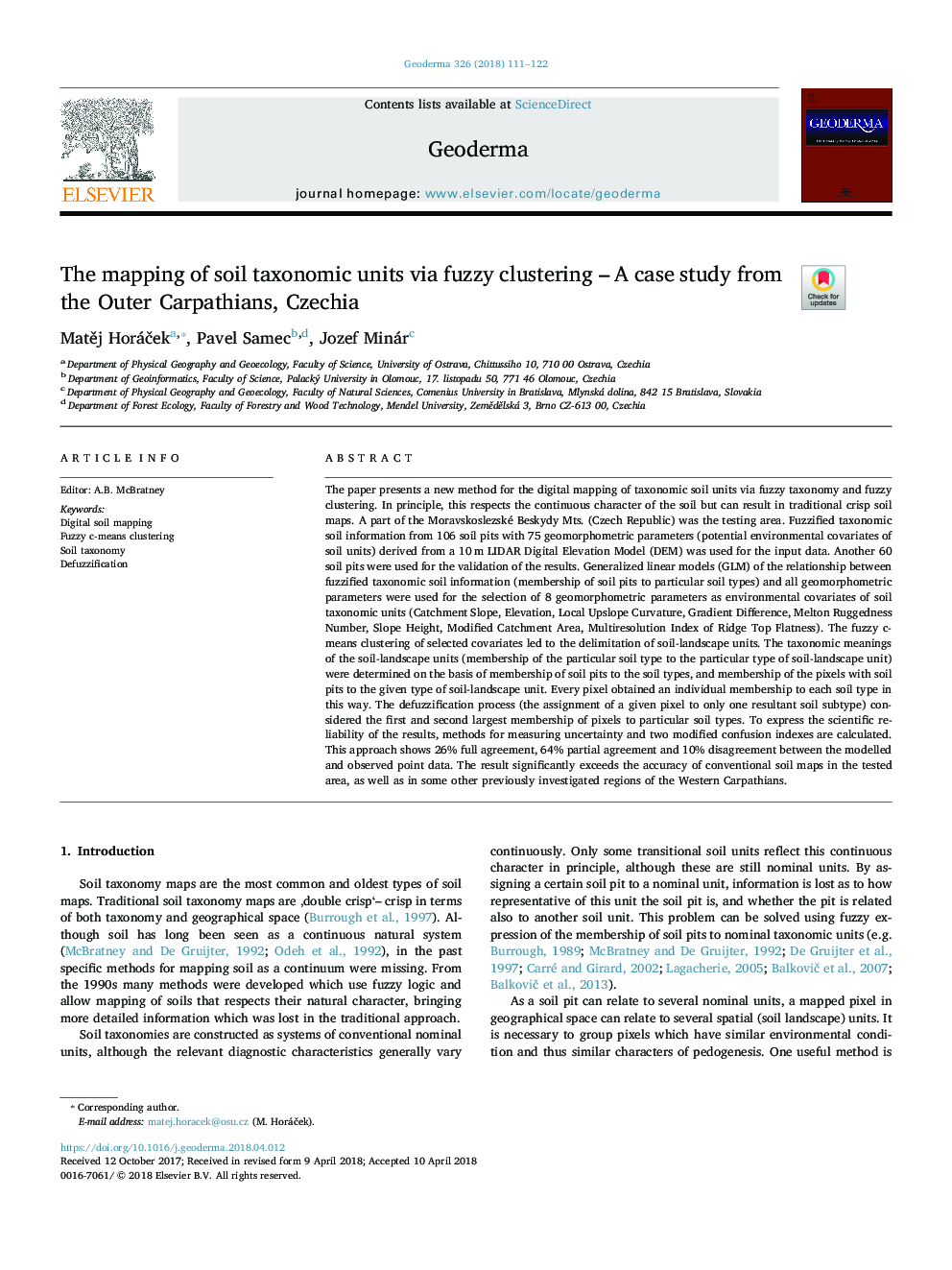| Article ID | Journal | Published Year | Pages | File Type |
|---|---|---|---|---|
| 8893982 | Geoderma | 2018 | 12 Pages |
Abstract
The paper presents a new method for the digital mapping of taxonomic soil units via fuzzy taxonomy and fuzzy clustering. In principle, this respects the continuous character of the soil but can result in traditional crisp soil maps. A part of the Moravskoslezské Beskydy Mts. (Czech Republic) was the testing area. Fuzzified taxonomic soil information from 106 soil pits with 75 geomorphometric parameters (potential environmental covariates of soil units) derived from a 10â¯m LIDAR Digital Elevation Model (DEM) was used for the input data. Another 60 soil pits were used for the validation of the results. Generalized linear models (GLM) of the relationship between fuzzified taxonomic soil information (membership of soil pits to particular soil types) and all geomorphometric parameters were used for the selection of 8 geomorphometric parameters as environmental covariates of soil taxonomic units (Catchment Slope, Elevation, Local Upslope Curvature, Gradient Difference, Melton Ruggedness Number, Slope Height, Modified Catchment Area, Multiresolution Index of Ridge Top Flatness). The fuzzy c-means clustering of selected covariates led to the delimitation of soil-landscape units. The taxonomic meanings of the soil-landscape units (membership of the particular soil type to the particular type of soil-landscape unit) were determined on the basis of membership of soil pits to the soil types, and membership of the pixels with soil pits to the given type of soil-landscape unit. Every pixel obtained an individual membership to each soil type in this way. The defuzzification process (the assignment of a given pixel to only one resultant soil subtype) considered the first and second largest membership of pixels to particular soil types. To express the scientific reliability of the results, methods for measuring uncertainty and two modified confusion indexes are calculated. This approach shows 26% full agreement, 64% partial agreement and 10% disagreement between the modelled and observed point data. The result significantly exceeds the accuracy of conventional soil maps in the tested area, as well as in some other previously investigated regions of the Western Carpathians.
Related Topics
Physical Sciences and Engineering
Earth and Planetary Sciences
Earth-Surface Processes
Authors
MatÄj HoráÄek, Pavel Samec, Jozef Minár,
